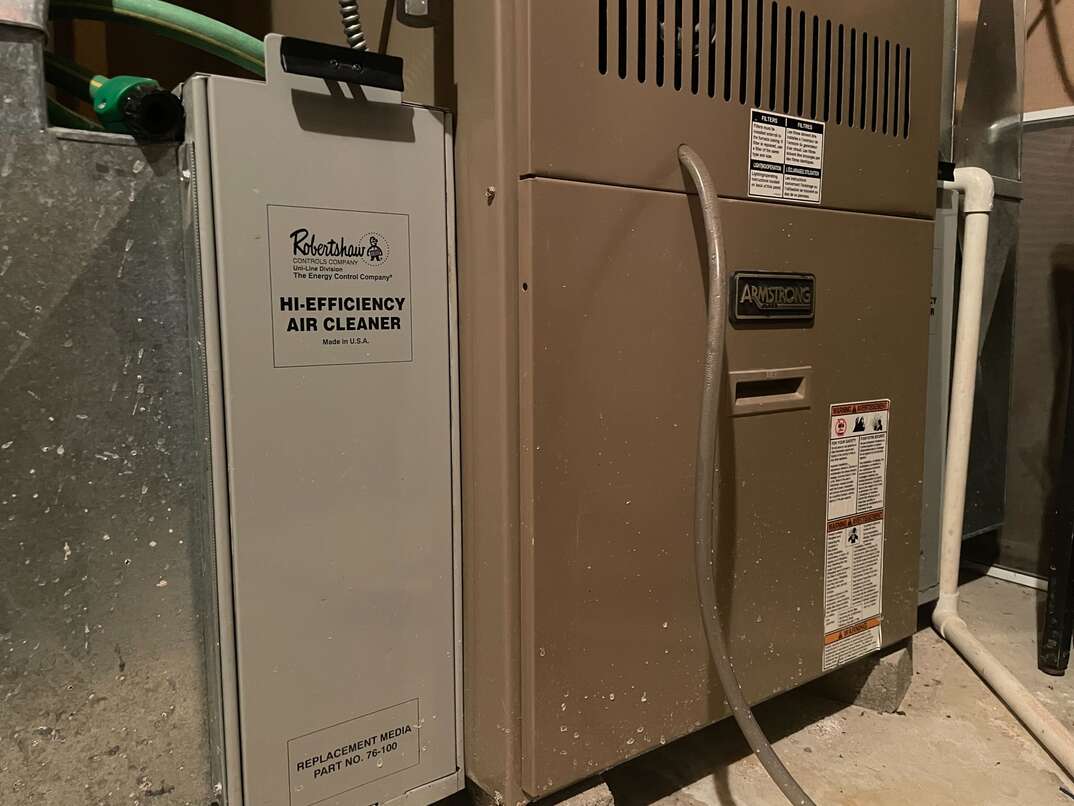- AppliancesElectriciansHVACLandscapingLocksmithPest ControlPlumbingRenovationRoofingT V RepairAll Home Improvement
- Car AccidentClass ActionCorporate LawCriminal DefenseDivorce LawEmployment LawFamily LawFinancial LawLegal AidMedical Injury LawyersMedical MalpracticeReal Estate LawWater Fire RestorationAll Legal
- InvestmentRetirementAll Finance
- Animal InsuranceAutoGeneral InsuranceHealth PolicyHome RentersAll Insurance
- DentalHealth SpecialistsAll Medical
- Animal CareVeterinaryAll Pets
- Auto GlassTowingAll Automotive
Furnace Trouble? Shoot! Well, Here's How to Troubleshoot Your Furnace

Before hiring someone to perform a furnace repair, you should evaluate whether the problem is something you can fix on your own.
Read More Heating and Cooling Articles
Use this guide to help you troubleshoot your furnace so you’re not wasting time and money on problems that have simple solutions.
One of the most common reasons people need to troubleshoot a furnace is that it won’t turn on to begin with. This issue could have simple solutions. For example, it could be that you haven’t set your thermostat properly or that the power switch is turned off. If the furnace has a pilot light, it’s possible that it’s not lit and is preventing your furnace from firing up.
The best way to approach this problem is to begin with the simplest possible solutions and work toward more complex ones. Check that the power switch is on, that your circuit breaker isn’t tripped and that the pilot is lit before exploring other potential problems with your furnace.
If you discover that your pilot light is out, you should take extra caution because it’s possible that your gas line is still feeding your furnace and the gas has built up. This can cause an explosion if you attempt to reignite the pilot. Turn the gas off for at least five minutes before turning it on and following the manufacturer’s instructions for lighting your pilot.
The Furnace Isn’t Heating Your Home After Turning On
Once again, when troubleshooting your furnace, you should go from the simplest solution to the most complex one. When your furnace is struggling to heat your home, it could potentially be that you have a dirty filter preventing proper airflow through your house. Replacing the filter is a cheap, simple fix you can perform in minutes.
It’s also possible you need to clean your air ducts. Improper airflow is a common reason your furnace isn’t operating efficiently, so doing what you can to improve airflow will help your furnace operate at peak efficiency.
If bad filters and dirty ducts aren’t the culprits, you could have dirty burners or a broken heat exchanger. If this is the case, you should probably have a professional handle your furnace repair.
Be cautious if your furnace problems are accompanied by foul odors and moisture buildup around your furnace. This could mean carbon monoxide is escaping from your furnace due to problems with the heat exchanger. If your family reports feeling ill, you should contact an HVAC professional immediately to have repairs performed.
If your pilot light is on and the power to your furnace is on, your thermostat could be preventing it from turning on. This could be as simple as making sure you’ve set your thermostat to heat your home. Other issues could include needing to make sure your thermostat has fresh batteries or that it’s recording the ambient temperature correctly.
One way to tell if your thermostat is the issue is to see if your furnace kicks on at all when raising the temperature. If not, your thermostat may need to be replaced.
More Related Articles:
- Hiring an HVAC Tech? Here are 5 Top Tips
- What's in My HVAC Technician's Van?
- HVAC Out? 5 Common Causes and Quick Fixes for Each
- How Much Does an HVAC Filter Cost?
- HVAC Upkeep Costs: Everything You Need to Know
The Furnace Isn’t Heating Your Home Efficiently
Does it seem like your furnace is working overtime to heat your home? If you’ve noticed that your energy bills have gone up recently, it could be due to poor home insulation, dirty air ducts or an internal problem with your furnace. Many people don’t pay much attention to their HVAC system until there’s a problem, but preventative maintenance can help.
If you have your heating system inspected once a year, your HVAC technician can tell you what furnace repairs are needed to keep your system working efficiently and whether any major components of your furnace are due for repairs. You could save a lot of time and hassle by having an annual inspection a month or two before winter hits.
The Furnace Is Making Strange Noises
While it’s common for HVAC systems to make noise, it’s also easy to tell when something doesn’t sound right. Squeaks, squeals and grinding sounds are causes for concern, but it can be difficult to pinpoint their causes. For example, a squealing sound could indicate that you need a new blower belt, but you should only perform this repair after confirming your existing belt is worn or damaged.
Any scraping sounds indicate a more serious problem. You shouldn’t attempt to fix the problem yourself and should call a professional right away. Turn the furnace off while awaiting the repair.
Elocal Editorial Content is for educational and entertainment purposes only. Editorial Content should not be used as a substitute for advice from a licensed professional in your state reviewing your issue. Systems, equipment, issues and circumstances vary. Follow the manufacturer's safety precautions. The opinions, beliefs and viewpoints expressed by the eLocal Editorial Team and other third-party content providers do not necessarily reflect the opinions, beliefs and viewpoints of eLocal or its affiliate companies. Use of the Blog is subject to the
Website Terms and Conditions.The eLocal Editorial Team operates independently of eLocal USA's marketing and sales decisions.



